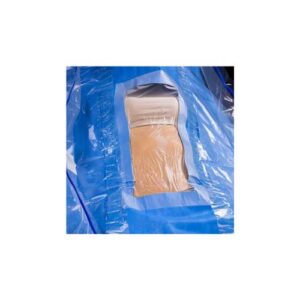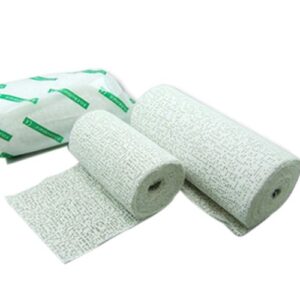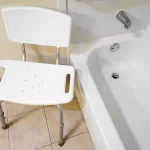Bandage Skin Traction with Adhesive Tape, Crepe Bandage, Cord, and Plastic Plate
Description
Bandage Skin Traction with Adhesive Tape, Crepe Bandage, Cord, and Plastic Plate: As a vital component of their arsenal, orthopaedic care practitioners rely on bandage skin traction to treat musculoskeletal injuries such as fractures. By applying regulated strain to the affected limb, this technique stabilises fractures and provides perfect healing conditions.
The components and procedures of bandage skin traction will be explored in this extensive lesson, with an emphasis on adhesive tape, crepe bandage, cord, and plastic plate. Let’s read below about “Bandage Skin Traction with Adhesive Tape, Crepe Bandage, Cord, and Plastic Plate”
Understanding Bandage Skin Traction:
Bandage skin traction is a non-invasive method for straightening and immobilising broken bones, which can alleviate pain and prevent further injury. Particularly effective for lengthy bone fractures (such as femur and humerus), it is often used either as a primary treatment or in preparation for surgery.
Components of Bandage Skin Traction:
Adhesive Tape:
Sticky tape is a must-have for bandage skin traction applications. It is crucial to ensure that the traction components are tightly attached to the patient’s skin without causing any undue discomfort. Hypoallergenic adhesive tape is the standard when working with skin that is particularly sensitive.
The next step is to wrap the tape around the limb, covering the skin above and below the fracture site.
Crepe Bandage:
Crepe bandage is frequently used for bandage skin traction due to its pliability and flexibility to conform. This form of bandage helps keep the traction device in place while also providing a comfortable wrap around the limb.
Following the application of adhesive tape, the traction components are fastened using the crepe bandage. Reduced risk of skin disintegration and discomfort is a result of its shape-fitting capabilities, which evenly distributes pressure.
Cord:
Bandage skin traction uses a cable fastened to the injured limb to apply pulling force. Ropes made of durable materials like nylon or polyester can withstand the wear and tear that comes with providing excellent traction.
By applying adhesive tape to the rope and threading it through a pulley system, the user can adjust and customise the traction forces. It is very important to keep the cord from slipping or being dislodged throughout the traction period.
Plastic Plate:
Footplate, traction plate, and similar terms describe a plastic plate that distributes traction force uniformly throughout the plantar area of the foot. Traction for the lower extremities relies on the footplate’s capacity to disperse impact uniformly across the foot.
The plastic plate is secured to the rope and then placed against the sole of the foot to ensure an even distribution of traction force. Because of its ergonomic design, the patient will experience a sense of support and comfort during the traction process.
Application Procedure: Bandage Skin Traction with Adhesive Tape
Patient Assessment:
Prior to administering bandage skin traction, a comprehensive assessment of the patient’s status and fracture type must be performed. During this procedure, the patient’s neurovascular status, skin integrity, and fracture treatment plan requirements are evaluated.
Skin Preparation:
Thoroughly prepping the skin is essential for avoiding issues like infection or skin irritation. It is necessary to treat any wounds or scrapes after washing and drying the skin. You can lessen the chances of skin reactions by using hypoallergenic adhesive tape.
Adhesive Tape Application:
Apply the adhesive tape in a circular motion all the way around the fracture location, from top to bottom. Securing it correctly requires a snug fit, yet it must not obstruct blood flow. We take extra precautions to avoid creasing or folding the tape so that it applies snugly and smoothly.
Cord Attachment:
Over the fracture location, the rope is usually taped to the skin. The next step is to thread the cord using a pulley system; this will allow you to apply controlled traction forces. The amount of tension that should be applied depends on the doctor’s prescriptions and the specific needs of the fracture.
Plastic Plate Placement:
It is common practice to apply a plastic plate to the foot’s plantar surface. This ensures that the traction force is distributed evenly, protecting the foot from pressure points. The plastic plate is secured into place once you’ve made any required changes to guarantee stability and comfort.
Crepe Bandage Application:
After the adhesive tape has been applied, the crepe bandage is wrapped around the entire limb. It is extremely important to ensure that the wrapping is uniform because else the blood flow could be cut off. The crepe bandage not only offers additional support, but it also helps to secure the traction components.
Monitoring and Maintenance:
It is essential to constantly check on bandage skin traction after application to ensure it is effective and to prevent any issues. Evaluated on a regular basis are:
The neurovascular exam is a routine way to check the pulse, sensation, and movement of the afflicted limb. Making the necessary changes can help reduce pressure points and preserve the integrity of the skin.
If the patient’s condition or fracture stability changes, a healthcare provider may need to adjust the traction force under supervision.
The patient’s comfort is paramount during bandage skin traction. Effective pain management and regular patient communication can put patients at ease. Verify that the plastic plate and crepe bandage are properly positioned and not applying excessive pressure to the injury.
Complications and Considerations:
The use of bandage skin traction is typically safe and successful; nevertheless, there are some considerations to bear in mind:
Skin Irritation:
Over time, adhesive tape and crepe bandages can irritate skin, especially in people with sensitive skin. You can lessen the chances of this by checking the skin often and using hypoallergenic materials.
Circulatory Compromise:
Overly snug adhesive tape or crepe bandages might reduce blood circulation and cause ischemia. Consistent neurovascular evaluations and proper application techniques are crucial for preventing circulation issues.
Traction Force Variations:
Unanticipated changes in the patient’s condition or fracture stability may necessitate adjusting the traction force. When caring for patients, medical professionals should maintain a close check and be prepared to alter treatment plans as needed.
Patient Compliance:
The effectiveness of bandage skin traction relies on the patient’s meticulous adherence to the directions. Improving outcomes is possible through patient education and clear communication of concerns regarding the importance of promptly reporting any difficulties and following the prescribed regimen.
Conclusion:
Using adhesive tape, crepe bandages, cable or plastic plates, bandage skin traction is an effective orthopaedic treatment option. This non-invasive method can stabilise and support broken limbs, making them more conducive to healing.
As part of fracture therapy, it is crucial to correctly apply bandage skin traction and continuously evaluate its effectiveness to ensure patient safety and outstanding outcomes in the journey towards recovery. Healthcare providers who want to give their patients with the finest care possible for musculoskeletal interventions should always enhance their skills and stay updated on the latest innovations in traction techniques. I hope you like reading “Bandage Skin Traction with Adhesive Tape, Crepe Bandage, Cord, and Plastic Plate”.











Reviews
There are no reviews yet.